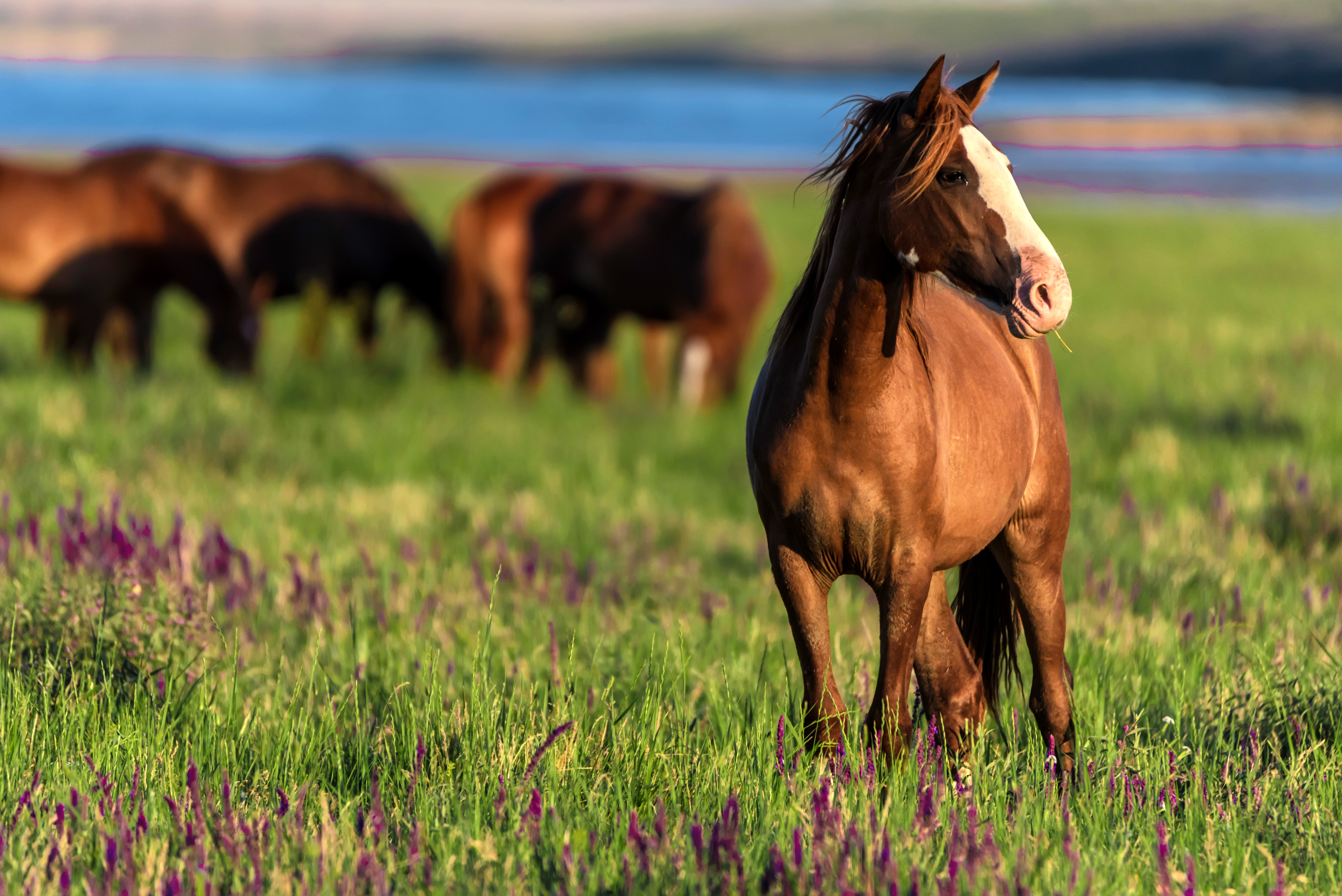Home > Horse World > Busting the “lead mare” myth
Busting the “lead mare” myth
- February 12, 2024
- ⎯ Equus
The idea that a single high-ranking alpha mare initiates the movement of the entire herd may be nothing more than a pervasive myth, say researchers from Germany.
Since the 1970s, prevailing theories of equine behavior held that, while the stallion was the ultimate leader and defender of the herd, the top-ranked female directed the movement of the group to different grazing areas or water sources. “The ‘lead mare’ theory is a common assumption among natural horsemanship trainers,” says Konstanze Krueger, PhD, of the University of Regensburg. “The theory is broadly used in training sessions, in which people are told to take over the ‘lead mare’ role.” After observing her own horses closely, however, Krueger was not convinced that the highest ranking mare was initiating movement for the entire herd.

To test the lead mare theory, Krueger organized a study in which she and three assistants observed movement of three groups of feral horses roaming the mountains near Frosinone, Italy. The herds, which were made up of horses ranging in age from 1 to 23 years old, had well-established hierarchies. Two herds had a single alpha stallion and one had an alpha stallion plus two lower-ranking younger bachelor males. “The groups were fairly stable,” says Krueger. “The alpha males have not been removed for years, and they still hold their harems this year.”
Click here to learn how the seasons affect “marish” behavior.
The researchers observed the groups during two different study periods, one year apart. The total observation time, spread over several days, was 15 hours per group. As they observed the herds, the researchers noted each member’s rank and documented two specific types of movements made by any member of the group: “herding” behavior, identified as one member driving others from behind, and “departures,” defined as occurring when one member moves away from the group in a particular direction with others following.
The data showed that only alpha stallions exhibited herding behavior, and in each instance, the entire group moved. But, surprisingly, mares of all ranks showed departure behavior, successfully getting others to follow when they left the herd. Krueger acknowledges that lower ranking herd members were more likely to follow a departing horse, but mares of any rank would initiate the movement.
“It is true that higher ranking horses can lead others more easily, and that lower ranking horses are inclined to follow higher ranking animals,” says Krueger. “But the theory of ‘individual lead mare’ roles is not true. There is no particular lead mare in a group. Higher ranking mares lead more often altogether, but which one of the mares takes the lead depends on the situation.”
These results, says Krueger, suggest that leadership is shared within a herd, which may prompt some trainers to revise their thinking. “While the hierarchy [of a herd] may be largely stable, the minute-to-minute decisions may be governed by other factors, and being a ‘boss’ does not necessarily mean that you become a leader your horse would choose to follow.”
Reference: “Movement initiation in groups of feral horses,” Behavioural Processes, March 2014 (Click here to read abstract)
This article first appeared in EQUUS issue #444.
Don’t miss out! With the free weekly EQUUS newsletter, you’ll get the latest horse health information delivered right to your in basket! If you’re not already receiving the EQUUS newsletter, click here to sign up. It’s *free*!





